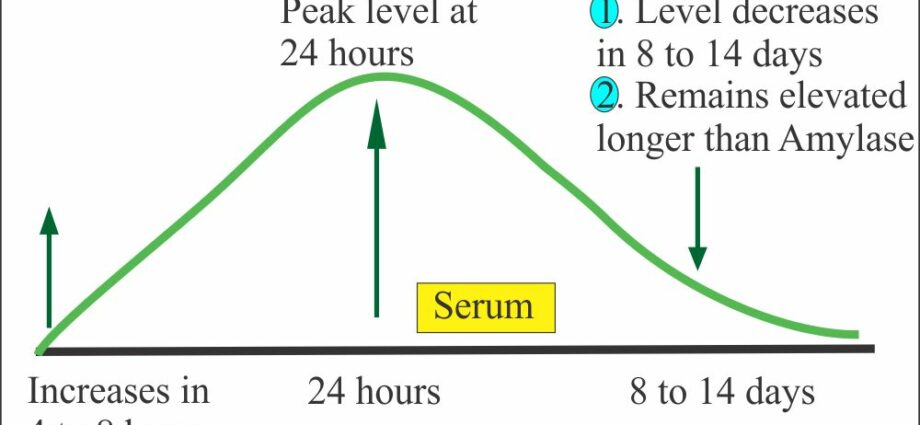Contents
Lipase level analysis
The test for lipase, an enzyme that helps digestion of fat, is a blood test that helps a doctor diagnose pancreatic disease.
What is lipase
Lipase is a digestive enzyme secreted by cells in the pancreas and released into the small intestine. It helps to digest fats, by breaking down triglycerides into glycerol and fatty acids. These can be absorbed by the small intestine and used by the body to provide it with energy.
Lipasemia refers to the level of lipase in the blood.
What is the lipase level analysis used for? ?
The doctor prescribes an analysis of the level of lipase to help him diagnose a pancreatic disease or having repercussions on the pancreas, for example the pancreatitis (inflammation of the pancreas), Crohn’s disease or the celiac disease.
The examination also makes it possible to follow the evolution of a disease or to evaluate the effectiveness of a treatment.
Thus, the doctor may order an analysis of the lipase level when his patient has the following symptoms, characteristic of pancreatic distress:
- severe abdominal pain;
- fever ;
- loss of appetite;
- nausea with or without vomiting;
- unusual weight loss;
- oily or fatty stools.
In addition, the doctor may also order the analysis of amylase. Note all the same that the dosage of lipase is more specific, since it is secreted exclusively by the pancreas, while amylase is secreted by the pancreas and the salivary glands.
How to interpret a lipase level that is too low or too high?
The blood lipase level is normally less than 60 IU / L (for international units per liter) or 190 IU / L, depending on the measurement technique used by the medical analysis laboratory.
An increase in lipasemia may be a sign:
- pancreatic damage:
- a pancreatitis, that is to say an inflammation of the pancreas, whether acute or chronic (and in the latter case, it is often associated with alcoholism);
- pancreatic lithiasis, ie an obstruction of the pancreatic duct;
- a pancreatic cyst;
- a pancreatic ulcer;
- pancreatic cancer;
- cholecystitis, ie a disease of the bile ducts;
- damage to the intestine and its immediate environment:
- a Crohn’s disease ;
- la celiac disease ;
- a mesenteric infarction;
- peritonitis;
- or in the event of renal failure, alcoholism, Hepatitis C.
What are the factors that vary the lipase level?
Some drugs can cause lipase levels to vary, such as:
- opiates such as morphine or codeine;
- some anesthetics;
- certain diuretics;
- or even contraceptive pills.
It is therefore important to talk to the medical staff, for example by providing recent prescriptions showing the treatment followed.
To decrease the blood level of lipase, it is necessary to address the cause of its increase. Thus, the treatment of pancreatitis, for example, consists of:
- put the pancreas at rest, and therefore fast (ie stop eating – but the patient can be “fed” intravenously);
- take anti-inflammatory drugs;
- take antibiotics, to prevent infection of surrounding tissues;
- or to undergo surgery which may consist of removing the gallbladder or draining the bile duct.
How is the analysis carried out?
The examination consists of a sample of venous blood, generally at the level of the elbow crease. Most of the time, it takes place directly in a medical analysis laboratory.
Note that the patient must be fasting for at least 12 hours before the examination, so that the dosage of the lipase is as accurate as possible.
Read also : Pancreatic cancer The small intestine Amylase analysis |










